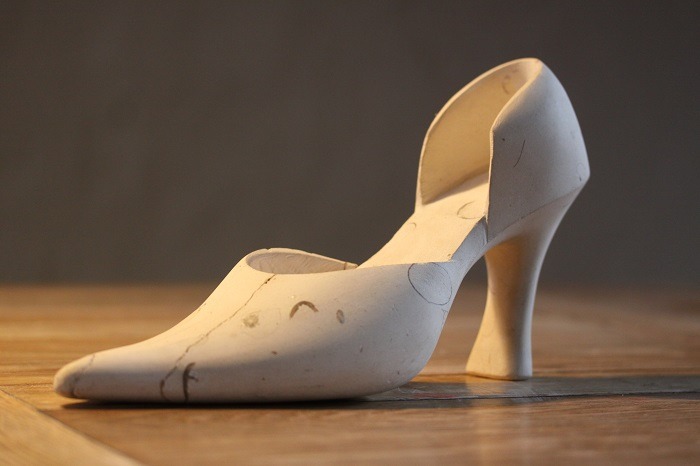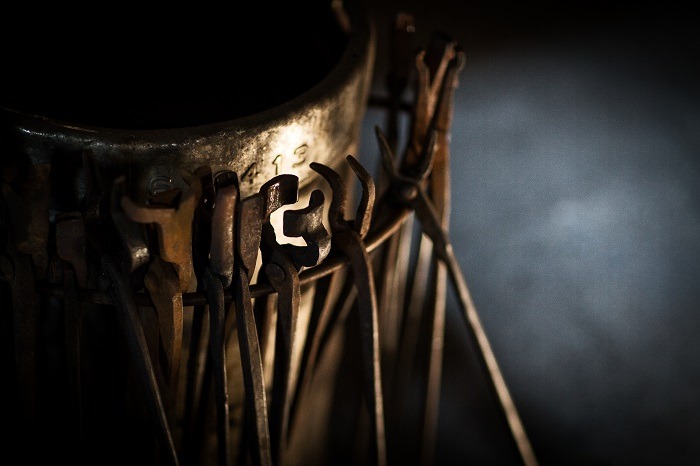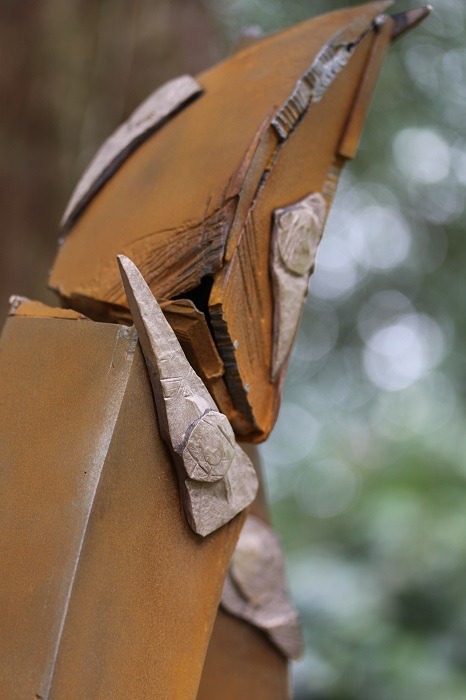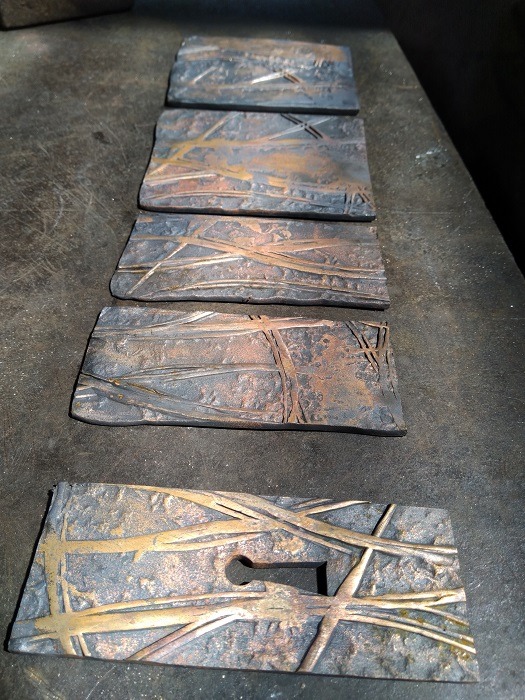Matter | Tool | Maker
THE BEAUTIFUL GREAT TRUTH
‘I discovered that the whole of reality is made of matter. Then human beings cover it temporarily with words. But nature is a material state, and will exist before and after us, when our words, spoken or written, are only dust in the wind. After, when all the humans are gone, the “beautiful, great truth” will be forever available for those who come, written on stones under the light. “Matter was, and always will be, speaking its own language.” This is the principal on which I base my life as a sculptor.’ ‘My English maestro, the late sculptor Sir Anthony Caro, told me in a recent letter that a sculptor has to be obsessive with his profession, “you have to live sculpture, think sculpture, dream sculpture”. I agree, but in order for that to happen, the sculptor has to first live matter, think matter, dream matter, just as a poet has to live words, think words, dream words.’ [1] Francisco Gazitua
THE FIRST MOVE
I became familiar with the term ‘moving matter’ during a lecture in 2011 by Chilean sculptor Francisco Gazitua, who creates monumental sculptures expressing his lifelong search for a ‘Language of Sculpture’. I realised that that’s exactly what I have spent most of my life doing: moving matter. It started when I was 13; a friend showed me how to carve spoons. Saw an arm-thick branch off a tree. Split it down the middle with an axe. Carve the piece from either side to create the general swooping spoon-curve. Carve the handle, and whittle down the actual rounded eating-part, which must be hollowed out as much as possible.

THE TOOLS
My mum kindly provided the little axe, having bought it specifically at the hardware store for my new-found hobby. (Being a single mother, she was the type of woman capable of solving any issue with whatever tool was about – not always appropriate that is – I recall a lot of bike mending with a nut-cracker for example!) So there I was, axe in hand, an eighties child in suburban Denmark. Sitting on the covered terrace of a bungalow – moving matter for the first time.

THE BUBBLE
I remember it very clearly as a little bubble. In this bubble was just the carving block in front of me. The tools and the object I was carving. In the periphery were the tiles of the terrace and the bushes and plants ahead of me, red brick behind my back. Complete focus. On the wooden branch – ‘the matter’; the relationship between the tools and the matter. For the first time spellbound by the unfolding of the Idea by way of the process; mesmerized by the emerging end-result. Chip, chip, chip. My own sense of being somewhat blending into this process, almost disappearing.

LIVING MATTER
Later on, once school finished, I decided to do an apprenticeship in horticulture. The work placements were spent on organic farms in Denmark and Norway. All small holdings, lots of organic vegetables produced for market, fields to plough, manure to spread, weeds to pull. In short: lots of matter to move.
Working soil demands tools and it was by way of this particular perspective I was introduced to metals. Ploughing the fields with horses and a one-furrow plough, the tip of the plough-shear broke. What to do? Not much according to the Norwegian farmer. Just carry on until we get another plough, perhaps on an auction in a few months.
Farming is of course a craft, connected with – and depending on – the other cornerstone crafts. The working, creation and restoration of objects made from stone, wood, metals, fabric, glass etc. It’s like a big web of matter, shaped specifically to our utilitarian and artistic needs. I started learning about metal, first welding and later on an art-college based course in 3D design crafts / blacksmithing in Hereford, UK.

LEARNING TO SPEAK IRON
Welding is the closest a metal sculptor comes to feeling like a surgeon. The steady hand, the white gloves, the intense observation. There is something very exhilarating about this dangerous closeness to electricity and the intense heat and glare of the melting pool. Metal sculpture is often constructed in a collage of many individual components. Like a patient in an operating theater the sculpture is gently stitched up and comes to life. Your own delicate heartbeat somewhere in the mix – precariously close to this circuit of current – to which you and the sculpture are interconnected by means of wires, clamps and rods.

FORGING MATTER
Once you are familiar with blacksmithing there is something very natural about it. You find yourself moving rhythmically between the fire and the tools, perhaps a little like a worker-ant; entranced by the work. All earth’s natural elements are present in a forge, but you don’t necessarily notice, as the fire over-power the scene with its hypnotic qualities.
You can never be sure that you know everything there is to know about metallic matter, as it’s not the sort of substance that can be calculated entirely by intelligence. Like any art form, it’s the intuitive knowledge which moves the hand holding the paint-brush, chisel or hammer.

Metal appears predictable; submissively mirroring the tools or work surfaces is comes into contact with during its plastic state. Mastering the art of working metal hot is among other things to know its breaking point, its extremities. A fine line of which you become familiar, through a myriad of encounters with the broken and mangled form: the large pile of rejects lurking under the hearth. The aim is perhaps not to perfect this art of coaxing, but to co-exist with the matter. As Gazitua says: ‘to let it speak its own language’:
‘Opposing our transforming human strength, which comes out of our hands and tools, is another equally potent force – the self-assembling, ordering energy of stone, something not unlike blood that circulates inside of it, that swells from its interior. I have felt, carving in my workshop, that creating sculpture generates an exchange similar to that of the undertow and the wave – where the same mass of water, in movement, struggles with an opposing current – moving it inside and out at the same time. Human strength against the open sea of matter, the strength of the shore against the rising tides. I believe, therefore that we have something in common, hidden within me and hidden within matter.’ [2]

Sources:
[1] http://franciscogazitua.com/pdf-francisco-gazitua/artandscience_saras2013.pdf
[2] http://franciscogazitua.com/pdf-francisco-gazitua/Matter.pdf
Further recommended reading : http://franciscogazitua.com/pdf-francisco-gazitua/Interview%20Anthony%20Caro.pdf